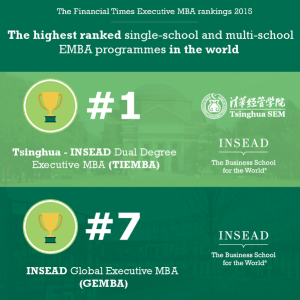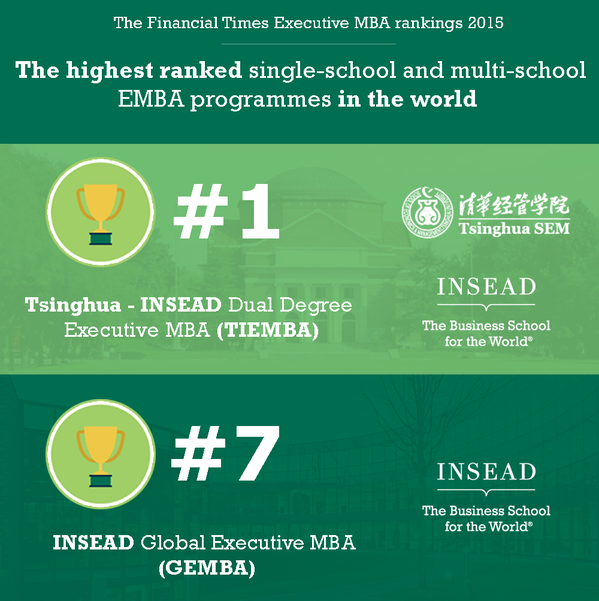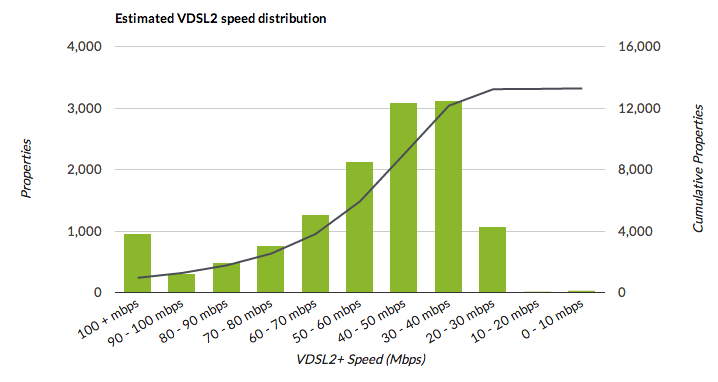 17 months, 52 days of full time study, 3 major assignments and 10 exams later I have finally graduated with my Global Executive MBA from INSEAD! Given I now have the benefit of hindsight, let me try and answer some of the big questions I had going into the program:
17 months, 52 days of full time study, 3 major assignments and 10 exams later I have finally graduated with my Global Executive MBA from INSEAD! Given I now have the benefit of hindsight, let me try and answer some of the big questions I had going into the program:
Should I do the MBA or EMBA?
The MBA has an average age around 28, and the EMBA 38. If you have minimal exposure to the basics of finance, marketing and operations for example and can afford a full year off then do the MBA. If however you just need to know enough to ask smart questions of your team, the cost of a year off is very high, and you have 8+ years experience then you should do the EMBA. Many people doing the EMBA are almost there in a mid-life crisis scenario – they have achieved a lot and are financially very comfortable, but have no idea what really makes them happy. The EMBA program is really set up to help you explore that.
Do the MBAs and EMBAs cover the same content?
Overall yes, however in a much shorter time. EMBA’s cover in 3 days what an MBA would cover in 12 days over 3 months. That means EMBA’s have more assumed knowledge, readings must be read and you never walk into an exam feeling really confident as you often have 12 hours post-lecture to prepare. The EMBA course is also more practical, it doesn’t go into the theory as deeply but is very strong on the implementation and case study side.
Why INSEAD over a US School?
INSEAD celebrates diversity in a big way. It’s a constant throughout teaching, participant selection, group selection and even social programs. I genuinely think part of the selection criteria is to maximise the number of participant countries more than pure test results. Group exams, simulations and projects are quite common. Traveling to electives is organised in groups, often with people sharing accommodation. Sharing summary sheets before exams is common. There is a real sense of shared destiny. One key observation I had was that in US programs the exam results are published to all members, and the bottom 5% given a warning – three warnings and you’re out. At INSEAD no results are published, and make-up exams are held quietly at a later date. Don’t get me wrong, people still fail and drop out, but everyone bonds together and that makes for a strong shared rather than individual experience. Networking is 50% of the reason people are here, so don’t underestimate the benefits of this culture. It’s also the #1 or #7 school in the world, depending on which program you take.
What was the hardest part?
The hardest part for me was the switching cost. By that I mean having a tough week at work, and then flying out to take a tough lecture on a totally different subject. I have learned that my brain loves to follow a long term focus and become great at it, so constantly disrupting that was at times even physically painful. I had to become comfortable with taking a day or two of constant effort to switch focus. If you don’t switch off work emails for example, then your brain never really internalises what you were meant to learn. You can’t look back at notes, it’s really experiential learning. By that I mean that the actual MBA content is pretty standard across all the programs I have seen. The exceptional part about INSEAD is the quality of lecturers – they are incredibly passionate, entertaining and challenging to listen to. As an introvert, I walked away from many lectures just needing and hour or so to sit and reflect on everything I had just heard.
Prioritising under pressure would be the second hardest part, but I feel that the program was structured in a way that it gradually made this harder rather than hitting you from day 1.
What was the best part?
The people. 95% of the participants were “just like me”, similar life stage and questions. It’s funny when you bring a group of highly successful people together and they all realise how lost each of us actually is. The first few modules are academic focused and people are still presenting a facade, but then one by one people open up and confess their flaws and insecurities. Some people have total breakdowns, some people quit their jobs and some get divorced. That’s not great in itself, but if people are actually facing issues that have bubbled under the surface then I do think that’s a great thing. Be warned though that taking the time to hold a mirror up to yourself can be dangerous! If you push through that phase though then you will have a more honest view of yourself and the world. You can address some things while in the program, but not all. I walk out of the program feeling more confident that I know myself and have the tools to make my life and the life of those around me genuinely better. I just hope I can hold onto this feeling.
How have I changed?
I don’t think I can objectively answer that. I filmed a before and after video, so maybe you can tell me?



